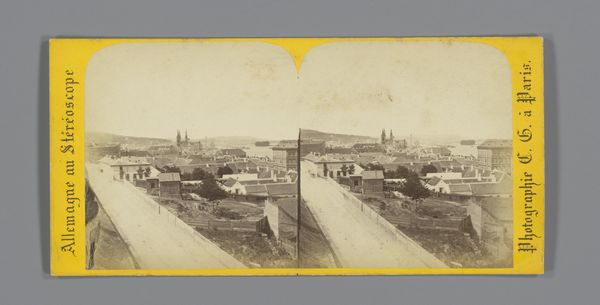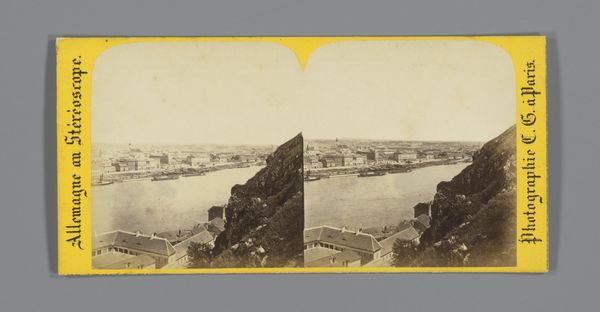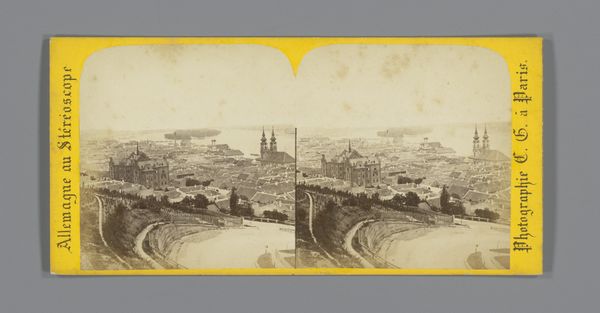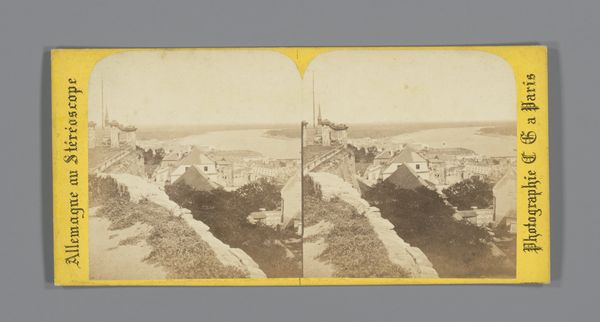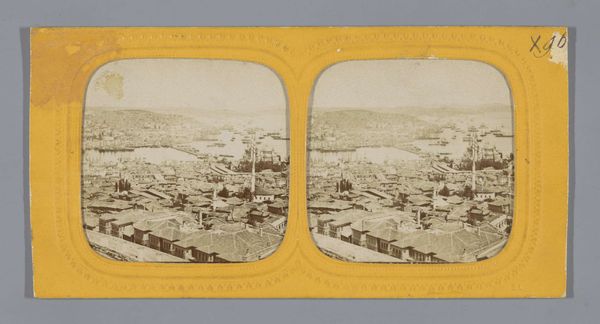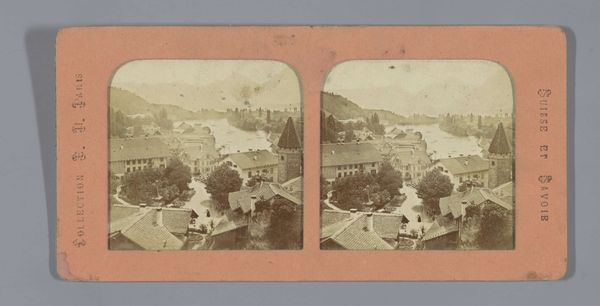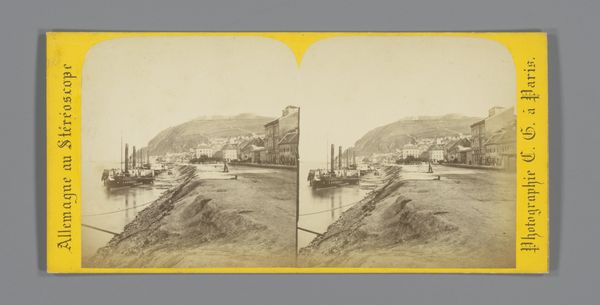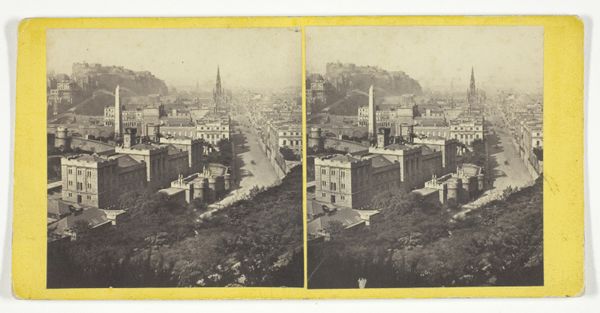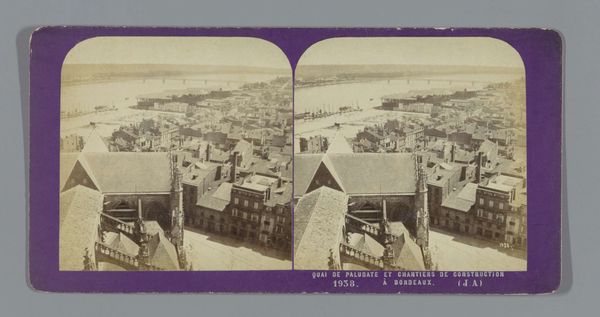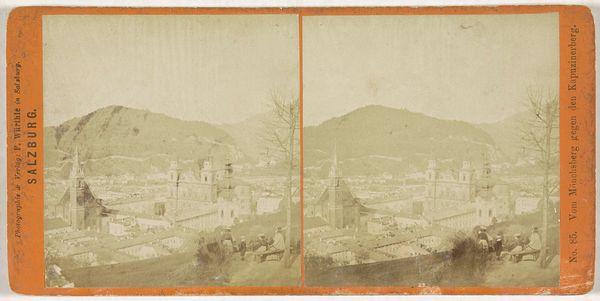
photography, gelatin-silver-print
#
landscape
#
photography
#
gelatin-silver-print
#
cityscape
Dimensions: height 84 mm, width 175 mm
Copyright: Rijks Museum: Open Domain
This stereoscopic card presents a view of Buda, Budapest, likely made in the late 19th century by Charles Gaudin. It's a photochemical print on card stock, a format designed for viewing through a stereoscope to create a three-dimensional effect. Photography, though seemingly an automated process, is deeply rooted in chemistry and optics. The collodion process used to produce images like this one involved coating a glass plate with a light-sensitive emulsion, then exposing and developing it. This was skilled work, done quickly, and often on location. The appeal of stereoscopic images lay in their ability to transport viewers to distant places. Mass-produced and relatively inexpensive, these cards democratized access to visual experience, much as digital images do today. They fueled a booming market, employing photographers, printers, and distributors. Consider the labor involved in capturing and reproducing this image, and how it offered a new, manufactured version of reality for a consuming public. This challenges conventional notions of art, making us think about who is behind the camera, the techniques they use, and the social contexts that give images their meaning.
Comments
No comments
Be the first to comment and join the conversation on the ultimate creative platform.

